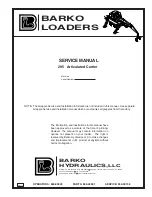
www.safetoe.net
Start With Comfort, More Than Safety
Optional Accessories:
WARNING:
Do not use the ear muff with any other respirator systems or hard hat. Failure to fit and use ear muffs
according to these instructions will reduce their effectiveness.
Users Instruction:
1.) FITTING INSTRUCTIONS
:
⚫
Move your hair out of the way to get a good seal between the ear muff
cushions and your head. Remove earrings if they interfere with the seal of the
cushion against your head.
⚫
Press the cups inward until they snap in around the ears. Then center the
ear cups over both ears.
⚫
Slide the ear cups up or down to find the position where the ear cups
completely cover your ears. When properly installed and adjusted, the cups
should not touch the headgear shell or visor surround.
⚫
Check the fit by talking out loud. Your voice should sound hollow, like you
are talking in a barrel. The noises around you should not sound as loud as
they did before you put the muffs on.
2.) THE USER SHOULD ENSURE:
⚫
The ear-muffs are fitted, adjusted and maintained in accordance with the
manufacturer’s instructions
⚫
The ear-muffs are worn at all times in noisy surroundings
⚫
the ear-muffs are regularly inspected for serviceability
3.) LIFESPAN
The Safety Earmuff can be expected to remain in service for 3 years
or more, when it is not damaged during use.
4.) CLEANING AND DISINFECTION
Clean the earmuff with mild soap and lukewarm water. Do not use
paints, solvents, chemicals, adhesives, gasoline or like substances on
this earmuff. The impact resistance and other protective properties of
the earmuff may be destroyed by such substances. The loss of these
protective properties may not be apparent or readily detectable by
the user. After each use, disinfection should be done and the use of
agents that are not known to be harmful to the earmuff.
5.) STORAGE
Store the earmuff in a cool, dry and clean place out of direct sunlight.
Avoid area where heat, moisture, light, oil, or their vapours or other
degrading elements may be present.
√
Standard: EN 352-1
Test
Requirement
Applicable
Result
Headband Force (4.3.3)
Maximum Force: 11.65 N
A
Pass
Cushion Pressure (4.3.5)
Maximum Pressure: 4005 Pa
A
Pass
Headband Force Variation (4.3.8)
Maximum Variation: -14.8%
A
Pass
Insert Loss (4.3.9)
/
A
Pass
Frequency (Hz)
63
125
250
500
1000
2000
4000
8000
Averange
20.5
15.2
21.3
31.6
38.0
33.8
29.0
34.8
Deviatioin
5.5
4.2
3.8
3.8
4.4
3.8
5.7
6.3
Min Requied
0
5
8
10
12
12
12
12
APV (dB)
15.0
11.0
17.5
27.9
33.6
30.0
23.3
28.5
H(dB)
27.0
M(dB)
26.4
L(dB)
18.7
SNR(dB)
27.0




















